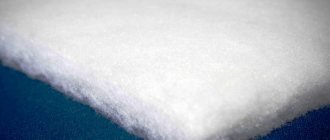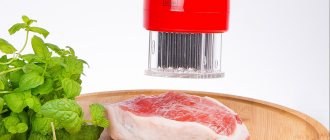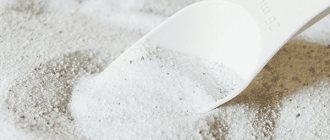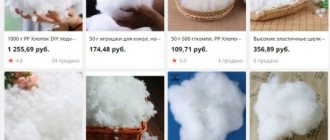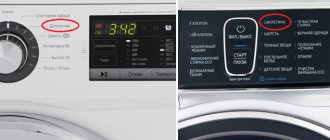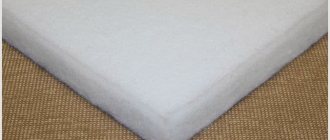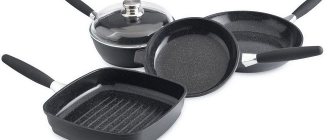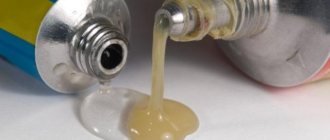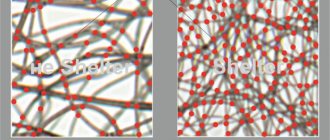A practical, warm, lightweight down jacket is ideal winter clothing.
The first to appreciate this were tourists and climbers, who, back in the middle of the last century, wore down jackets on hikes, sewn with their own hands from the strangest, at first glance, materials. Clothing manufacturers quickly got their bearings and now offer customers of all ages and social status a great variety of models. What insulation is best for a winter jacket? This will be discussed in our article.
Natural or artificial?
When choosing a down jacket, you need to start with the filling. When asked which insulation for a jacket is better, the answer quite often follows - of course, natural. Is this always the case? Natural down has, of course, a lot of positive qualities:
ability to retain heat well, lightness.
Yes, but these same qualities also distinguish artificial materials for filling down jackets! Moreover, sometimes they are even lighter than natural ones, and they retain heat better - at least some.
Let's talk about laundry
A down jacket with natural filling is very difficult to wash in a washing machine:
Fluff tends to bunch up and penetrate through holes in the seams, which negatively affects the performance of your unit.
If the fabrics from which the top and lining are sewn are not of very high quality, the fluff is knocked out through the holes in the weaves.
Important! Before turning on the machine, you need to put your jacket or coat in a special bag - then the fluff will cause much less harm.
After the jacket is washed, you will have to lay it out on a horizontal surface. If you try to dry it on a line or even a hanger, all the filler will end up at the bottom or in the corners. This, of course, is not a problem that will ruin your life forever. But after the product has dried, you will have to evenly distribute what is inside it and tap your favorite thing with the most ordinary carpet beater. Sometimes you have to do this between washes. Therefore, down jackets with natural filling are most often made quilted. But with artificial material you won’t have to do anything like that.
Important! In expensive models, the natural down is in special bags; it does not bunch up as intensively, but you will still have to dry the products on the floor and pat them dry.
Small red spots
Another consumer myth says: “Synthetics are a terrible allergen, but down and feathers are a natural product.”
Roskachestvo experts object: polyester is also hypoallergenic. Allergies or irritation can be caused by fiber ends that penetrate the lining and come into contact with the skin. But this is a question of the quality of the product as a whole, the quality of the lining, and not the polyester itself. Each insulation, before entering the product, undergoes textile preparation. The down is washed many times, odors and waste products of birds are removed from it. If this is not done, harmful microorganisms and parasites will remain in the feather and down material, which will bring a person much more problems than allergies. As for poor preparation of synthetic material. The fiber is formed and wetted using chemicals, which are then removed. Not removing them is like not rinsing the fluff.
When properly processed, both fillers are safe for health. If it’s bad, both are dangerous.
Which fluff is better?
Are you not afraid of the upcoming difficulties with washing and still decide to buy a jacket with natural down? Well. Here are the fillings for down jackets - which is better: duck, goose or something else?
Important! As a rule, clothing manufacturers use waterfowl down because it does not rot when exposed to moisture. But some cheap Chinese models may also contain chicken, and this is something you should discard right away - such a down jacket will last exactly until you get caught in the cold winter rain. Especially if the top is made of not very high-quality fabric, the manufacturer who allows itself to use such filling clearly does not care about quality, or is offering you not street clothes, but home clothes. Drying your jacket completely will not be easy.
Eider down is much better. Eider down is the highest quality, but also the most expensive. Products with such filling are very warm and very light.
Lebyazhy is also of high quality. Perhaps it retains heat a little worse, but is just as light and soft.
Important! If you live in an area where there are very severe frosts in winter, it is better to choose one of these two options:
Goose and ducks. Jackets made with duck and goose down are slightly cheaper. They are heavier and a little more rigid, but quite warm and well suited for not particularly cold winters (for example, in regions with a mild maritime climate). Northerners who cannot afford a jacket with eider down and have to settle for duck down usually sew two-layer down jackets.
Important! For those who prefer natural materials, it is better to opt for down and feather filling - it will last longer.
Manufacturing and equipment
Depending on the raw material, synthetic fluff can be made from primary and secondary polymer .
The technologies for forming the fiber and producing the synthetic fluff itself are the same for both types of polymer.
For recycled polyester, pre-treatment operations are still required. The idea of processing PET bottles into synthetic fiber and then into synthetic fluff is very interesting from an economic point of view.
Let's take a closer look at how ordinary plastic containers turn into modern insulation.
Types of raw materials
There are several ways you can go here:
- Purchase waste PET containers , grind, wash and granulate them yourself. This is a labor-intensive and lengthy process, which has its own subtleties.
- Purchase ready-made clean flex flakes as raw materials . The most optimal option in terms of price and quality, since during the recycling process the polyester was not melted, which means it was not subject to thermal decomposition.
- Purchase granulated recycled PET . Such raw materials are ideal for further extrusion due to their bulk characteristics. But, alas, its composition and processing conditions are unknown. There is a risk of purchasing low-quality plastic.
Obtaining polyester thread
To form and draw threads from molten polyethylene terephthalate, you need:
- Extruder . This machine not only melts the polymer, but also thoroughly mixes and homogenizes it. The simplest and most inexpensive option is a single-screw machine. To work with flex flakes, it is better to choose a device with a large diameter in order to fill the auger as much as possible. Since recycled PET melts easily, the extruder length can be around 30-35D. The main condition is the presence of degassing, at least natural. Ideally, you need a vacuum pump. Removing volatile components will eliminate odor in the finished thread.
- Melt filter . Located at the exit of the extruder. When working with recycled materials, it traps dirt and foreign impurities.
- Melt pump . Installed in front of the die. Its main function is to pump the melt towards the head and maintain a constant flow as it exits the head. When working with flex, it is extremely necessary, since the filter allows you to reduce pulsation and make the finished threads more uniform.
- Filera . Usually there are about 200-300 round cross-sections with many holes. For textile thread, their diameter is 0.2-0.4 mm.
- Winding station . To be wound into bobbins, the threads enter through a chamber where they are cooled by air currents. Winding takes place on a system consisting of several rollers. An interesting idea is to apply a lubricant (organopolysiloxane) to the threads before winding by spraying. Surface treatment with silicone at this very moment will protect the thread from gluing and make the surface of the fiber insensitive to moisture from the air. The reels will be stored better.
More information about granulation equipment can be found here.
Synthetic fluff production
- To produce synthetic fluff, the threads must be formed into bales . To do this, the coils are threaded into the stand of the unwinding device, which then feeds them into the chamber. There the fibers are mixed and treated with silicone. The output is a tangled web, which is cut into pieces if necessary.
- The main piece of equipment is the carding machine. Many hollow needles, moving in different directions, comb the fabric. The needles, capturing the threads, destroy and finish them in different directions. Many air voids are formed . And the fiber, acquiring the character of a spring, becomes elastic and resistant to load.
- Package . Synthetic fluff is usually packaged in bags or briquettes . The vacuum packaging system helps to significantly save space during transportation.
Synthetic fillers
Modern synthetic materials make it possible even for people with a modest budget to dress beautifully, comfortably and modernly. This also applies to down jackets.
Artificial fillers are sometimes superior in quality to natural ones:
- they can retain heat better;
- some of them allow you to feel comfortable, even if a thaw suddenly sets in after the morning frost;
- they are easy to wash and dry;
- many of them do not go astray over time, so there is no need to pat clothes;
- among artificial fillers there are those that can last for decades.
So, if you are looking for an answer to the question, which insulation for a winter coat is better, be sure to pay attention to synthetic materials. It could be:
- padding polyester;
- synthetic fluff;
- isosoft;
- holofiber;
- Thinsulate.
New materials appear every year, so don't be surprised if you see a different name on the label. But so far these remain the most popular.
Sintepon
The cheapest and still very fashionable filler. Of course, in recent years it has been pretty much replaced by other materials, but it has a lot of advantages:
- ease;
- hypoallergenic;
- ability to retain heat well;
- ability to dry quickly after getting wet or washed;
- does not absorb moisture;
- can be washed in any way, including in an automatic machine;
- Can be dried in any position.
Important! Jackets made with synthetic padding weigh almost nothing. This material is absolutely inert, that is, it does not react with the environment, which means it does not emit harmful substances and does not cause allergies. Washing such a thing is a pleasure: no delicate washing is needed, any detergent can be used, and you can even dry it on a radiator - the shape will not change.
There are, however, a couple of very significant drawbacks, due to which this material is gradually falling out of use:
- after washing the jacket will deflate somewhat;
- after prolonged wear or several washes, even sheet synthetic padding, which is usually used, will become lumpy.
Important! A quilted product with padding polyester filling is much more reliable: the material does not bunch up and does not lose volume.
Care
The rules of care are not complicated.
Artificial swan down does not require special care, like natural one. It is enough to wash the product at temperatures up to 40 degrees and dry it flat to keep the product’s shape longer.
Synthetic down is afraid of elevated temperatures and open sources of fire, so it is better to dry it naturally. It is also allowed to spin clothes in a washing machine centrifuge. This material is only “afraid” of aggressive bleaches that disrupt the microfiber structure. When washing pillows, it is best to use the delicate cycle to avoid damaging the cover.
After washing, you need to shake the item so that the fluff does not fall off. Blankets and pillows with artificial down need to be aired outside or on the balcony several times a year. When storing products in vacuum bags, their shape does not deteriorate.
Isosoft
This is a membrane insulation invented in Europe. It was proposed by the company Libeltex, and it is usually found in the clothes of this brand. The undoubted advantages include:
- very small mass;
- almost complete lack of ability to absorb moisture:
- excellent thermal protective qualities:
- the ability to wash in any convenient way;
- durability.
Important! Isosoft is lighter than padding polyester, and even more so than natural fluff. It perfectly repels moisture, so the jacket will not get wet even in very heavy rain. When you put on a thin down jacket with this filling for the first time, you will be very pleasantly surprised - even in severe frost it will not be cold in it. You can wash the product as you wish - manually, in an automatic machine, and even in an activator unit without any additional protection. The jacket will dry very quickly and in any position.
In addition, isosoft:
- does not lose shape;
- does not lose volume;
- does not clump together.
Important! This perfection has only one drawback - it costs almost the same as an eiderdown down jacket from a good manufacturer.
Holofiber
A soft and lightweight material used to stuff toys, mattresses and clothing. Perhaps, for the northern countries it is an ideal option , a very reasonable combination of price and quality. If we talk about the advantages, they are as follows:
- light weight (heavier than isosoft, but not significant);
- does not cause allergies;
- does not absorb water;
- does not lose volume when washed or wet;
- is inexpensive;
- found in many models.
Important! However, some users believe that this material does not allow air to pass through well enough. But this is claimed only by those who wore jackets and coats, the fabrics of the top and lining also do not allow air to pass through. Those who wear models made of “breathable” materials do not have this problem.
Average price per kg
To understand the economic attractiveness of producing this product, you can consider the approximate prices in the country for 1 kg of synthetic fluff made from recycled PET (minimum batch).
| City | Price per 1 kg/rub |
| Moscow | 165 |
| Saint Petersburg | 180 |
| Krasnodar | 140 |
| Volgograd | 129 |
| Ekaterinburg | 180 |
| Tomsk | 140 |
| Novosibirsk | 120 |
| Vladivostok | 200 |
Thinsulate
Siliconized polyester, the fibers of which are twisted in a spiral and surrounded by air. They are very thin, about 60 times thinner than a human hair. This material was intended for astronauts, but is also widely used in ordinary clothing. Its advantages:
- the warmest;
- the thinnest;
- the easiest;
- easy to wash;
- does not get into clumps;
- dries very quickly;
- does not react with the environment;
- does not cause allergies;
- does not absorb odors.
There is no perfection in the world, so Thinsulate also has disadvantages:
- price;
- the body can overheat even in cold weather;
- static charge accumulates.
How much synthetic fluff do you need for a pillow?
Pillows filled with polyester down are suitable for both children and adults, but for people with allergies they are simply irreplaceable. You can buy such a product in a store or make it yourself - you just need to calculate how much synthetic fluff you need for a pillow.
Nonwoven fabric can have different densities, the unit of measurement of which is decitex (dtex). To make an elastic and soft pillow, a not too dense filler (1-1.5 dtex) is suitable.
Manufacturers claim that a 70x70 cm pillow will require 0.9 kg of down, and a 70x50 cm pillow will require 0.6 kg. The cost of a handmade product is half the price of a purchased one.
Sintepooh
As the name suggests, this filler is similar in structure to down, and in properties - to synthetic fillers. This is really fluff, that is, a bulky mass, but it consists of artificial fibers. The fibers spring back and intertwine, resulting in a fairly dense structure that provides good thermal insulation.
Important! To prevent the fibers from clinging to each other and bunching up, they are treated with silicone.
The advantages of this material are no less than others:
- unable to react with the environment;
- does not emit allergens;
- does not absorb dust;
- does not retain odors;
- characterized by increased wear resistance;
- not susceptible to fungus;
- has antiseptic properties;
- allows air to pass through;
- washes perfectly:
- dries easily.
Safety level of synthetic fur
Synthetic fluff is absolutely safe and suitable for almost everyone: the material does not cause allergic reactions.
In addition to being hypoallergenic, it has another quality that is important for human health - it does not collect dust. The structure and properties of the fibers do not allow dust to accumulate, so conditions favorable for dust mites do not arise.
Important! Using items with synthetic down filling will not cause complications in patients with bronchial asthma and other pulmonary diseases.
Standard
When choosing natural down, be sure to inquire about the standard to which it was processed. The label must read DIN EN 12934. This means that the fluff has gone through all the stages:
- soaking;
- washing;
- drying;
- filtration;
- sterilization
Important! Only in this case will a jacket with natural down be worn for a long time. Don’t forget to smell the product - it should smell like any new thing, without any impurities of mustiness and rot.
Seams
Cheap models are made quilted, that is, stitched in squares or horizontal stripes. Sometimes expensive down jackets look the same. The difference is determined by touch - yes, we are talking about the very bags that are present in high-quality products and are absent in low-quality ones.
Important! In any case, pay attention to the seams. They should be smooth, beautiful, without tears or protruding threads. In a cheap quilted down jacket, the filling is located directly under the outer material.
The manufacturing technology is simple:
When sewing, the top and inside are quilted together along parallel lines, either vertical or horizontal.
The pockets are then filled with down.
After this, they quilt again, but perpendicular to the existing lines - in much the same way as quilts are sewn.
Unfortunately, with this technology, the fluff gets lost very quickly - first, “cold spots” are formed, then all the filler ends up in the corners. Bags made of special fabric, which are used in more expensive models, allow the natural filler to retain its shape longer. At the same time, the product itself looks like a regular coat or jacket, without additional seams.
Important! Don't forget to check if fluff is coming out through the holes in the seams. To do this, just bend the product at the seam and see if there is such a defect, it will certainly appear.
Varieties
Based on linear density, the following types of synthetic fluff are distinguished:
- fiber length (32 or 64 mm);
- thickness (7 D or 15 D).
Varieties of hardness:
- Soft (7D/32) - is versatile, soft, and retains its shape.
- Hard (15D/64) – characterized by increased elasticity, quickly recovers after load, not intended for stuffing small products.
- Cotton wool - resembles cotton in appearance, is lightweight, has low density, fluffy structure, and low strength.
- Balls - made in soft and hard forms, the balls are formed due to dense twisting during carding, due to this elasticity and excellent shape retention are achieved.
